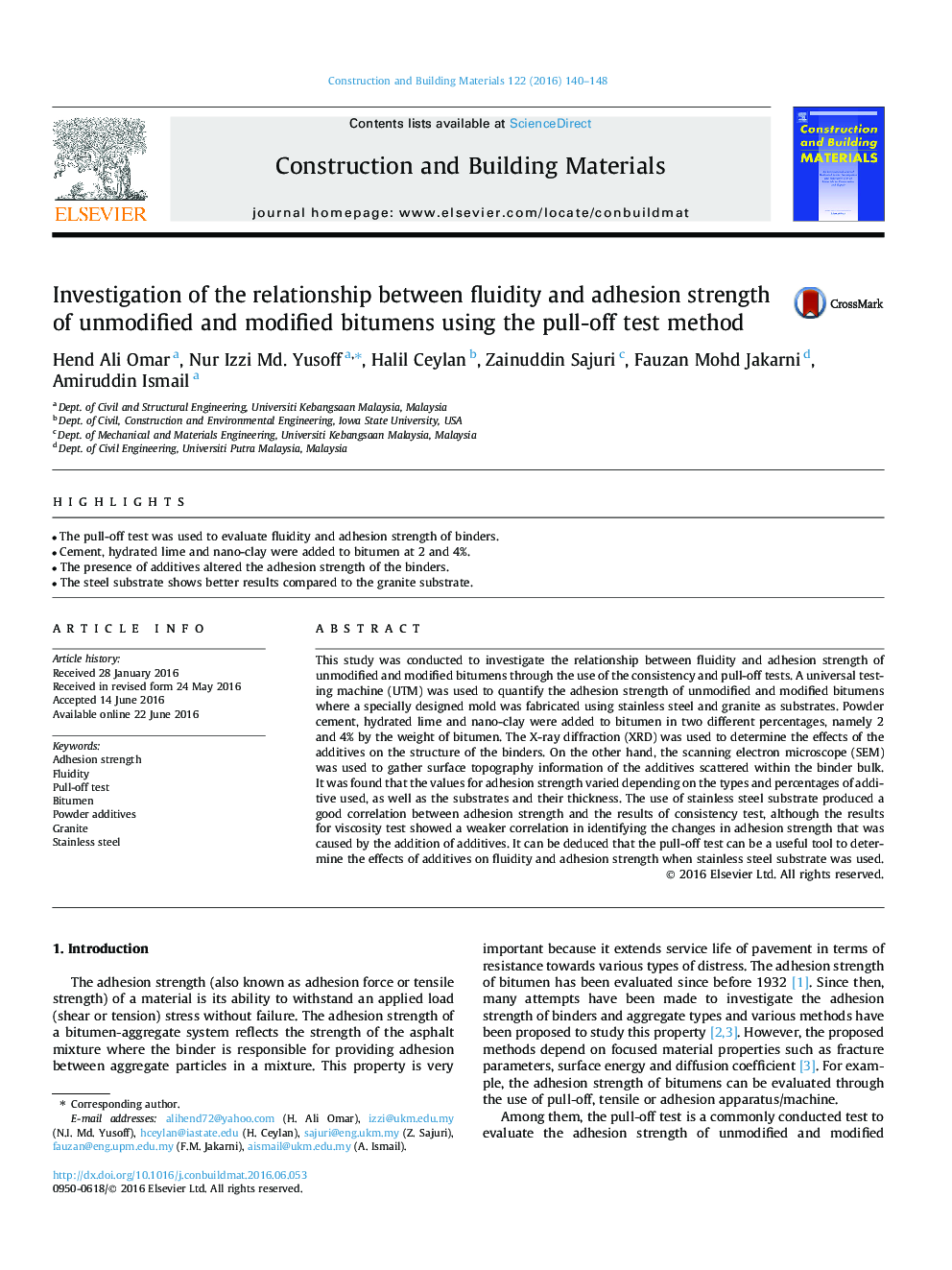| Article ID | Journal | Published Year | Pages | File Type |
|---|---|---|---|---|
| 6717933 | Construction and Building Materials | 2016 | 9 Pages |
Abstract
This study was conducted to investigate the relationship between fluidity and adhesion strength of unmodified and modified bitumens through the use of the consistency and pull-off tests. A universal testing machine (UTM) was used to quantify the adhesion strength of unmodified and modified bitumens where a specially designed mold was fabricated using stainless steel and granite as substrates. Powder cement, hydrated lime and nano-clay were added to bitumen in two different percentages, namely 2 and 4% by the weight of bitumen. The X-ray diffraction (XRD) was used to determine the effects of the additives on the structure of the binders. On the other hand, the scanning electron microscope (SEM) was used to gather surface topography information of the additives scattered within the binder bulk. It was found that the values for adhesion strength varied depending on the types and percentages of additive used, as well as the substrates and their thickness. The use of stainless steel substrate produced a good correlation between adhesion strength and the results of consistency test, although the results for viscosity test showed a weaker correlation in identifying the changes in adhesion strength that was caused by the addition of additives. It can be deduced that the pull-off test can be a useful tool to determine the effects of additives on fluidity and adhesion strength when stainless steel substrate was used.
Related Topics
Physical Sciences and Engineering
Engineering
Civil and Structural Engineering
Authors
Hend Ali Omar, Nur Izzi Md. Yusoff, Halil Ceylan, Zainuddin Sajuri, Fauzan Mohd Jakarni, Amiruddin Ismail,
